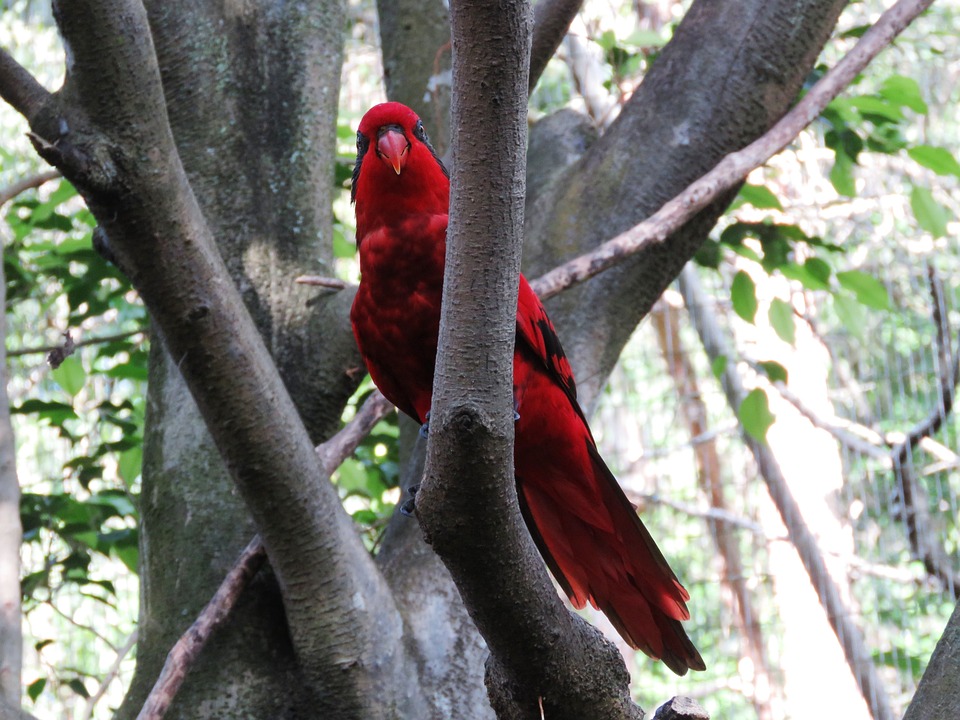Parrots are fascinating and intelligent creatures known for their vibrant plumage and ability to mimic human speech. However, parrots can sometimes exhibit aggressive behavior towards inanimate objects, which can be both concerning and potentially damaging to their surroundings. In this article, we will explore the reasons behind this behavior and provide effective strategies to discourage aggression towards inanimate objects. Additionally, we will address some frequently asked questions to help you better understand your parrot’s behavior.
Understanding Aggressive Behavior in Parrots
Parrots, like any other animal, may display aggression due to various reasons. Understanding the underlying causes behind their behavior is crucial in addressing the issue effectively. Here are some common reasons why parrots may show aggression towards inanimate objects:
1. Territorial Instincts: Parrots are creatures of habit and tend to develop a strong attachment to their surroundings. They may view certain objects as part of their territory and become territorial and protective of them.
2. Frustration or Boredom: Parrots are highly intelligent creatures that require mental stimulation and enrichment. When they lack proper mental and physical stimulation, they can become frustrated, leading to aggressive behavior towards objects.
3. Fear or Anxiety: Parrots, especially those that have not been properly socialized, may exhibit aggressive behavior as a defensive response to perceived threats or unfamiliar objects in their surroundings.
Effective Strategies to Discourage Aggressive Behavior
Fortunately, there are several strategies you can employ to discourage your parrot’s aggressive behavior towards inanimate objects. By implementing these techniques consistently and patiently, you can help your parrot overcome their aggression and create a more harmonious environment. Here are some effective strategies to consider:
1. Identify and Remove Triggers: Carefully observe your parrot’s behavior to identify specific objects or situations that trigger their aggression. Once identified, remove or modify these triggers to reduce their stress levels.
2. Provide Enrichment and Mental Stimulation: Parrots require mental stimulation to prevent boredom and frustration. Offer a variety of toys, puzzles, and foraging opportunities to keep them engaged and mentally stimulated.
3. Positive Reinforcement: Reward your parrot with treats, praise, or their favorite toys when they exhibit calm behavior around inanimate objects. Positive reinforcement helps them associate good behavior with rewards and encourages them to repeat it.
4. Socialization and Desensitization: Gradually introduce your parrot to new objects or stimuli in a controlled manner. This will help them overcome fear or anxiety associated with unfamiliar objects, reducing their aggressive responses.
5. Seek Professional Help: If your parrot’s aggressive behavior persists despite your efforts, consider consulting a professional avian behaviorist or veterinarian. They can provide expert guidance tailored to your parrot’s specific needs.
Frequently Asked Questions (FAQs)
1. Is parrot aggression towards inanimate objects a sign of a deeper behavioral issue?
Not necessarily. While it can be a cause for concern, aggression towards inanimate objects is a common behavior in parrots. However, consistent aggression or aggression towards living beings should be addressed promptly.
2. Can neutering or spaying a parrot help reduce aggression?
No, neutering or spaying does not have a significant impact on reducing aggression in parrots. It is more effective to focus on behavioral training and environmental enrichment to address aggressive behavior.
3. Is punishment an effective method to discourage aggression towards objects?
No, punishment can have negative consequences and may exacerbate aggression. Positive reinforcement techniques and redirection towards appropriate behaviors are more effective and humane approaches.
4. How long does it take to see improvements in a parrot’s behavior?
Each parrot is unique, and the timeframe for behavior improvement can vary. It requires consistency, patience, and understanding. In some cases, noticeable improvements can be seen within weeks, while others may take months.
5. Can certain parrot species be more prone to aggressive behavior towards objects?
While individual personalities vary within each species, certain parrot species, such as Amazon parrots and African grey parrots, are known to exhibit more territorial behavior. However, proper training and environmental enrichment can help mitigate aggression in any species.
By implementing these strategies and understanding your parrot’s behavior, you can create a harmonious and enriching environment for your feathered friend. Remember, patience and consistency are key when addressing aggressive behavior in parrots.









